A fine exhibitions standard 7 ¼ inch gauge model of a 4-6-0 Robinson Class 8F Great Central Railways tender locomotive No 1095 , built by the late Mr Alexander Colin Craven (1889-1970), the silver soldered copper boiler with fittings including steam pressure gauge, twin sight-glasses with drain taps, regulator, firebox doors, safety valves, direction control and other usual fittings. The chassis having twin outside cylinders with cab operated cylinder drain cocks and internal valve gear and fluted motion, The six-wheel tender with fitted hand feed pump, coal compartment, steps and hand irons, vacuum hose and couplings. The model finished in traditional Great Central Railway green and black lined livery with brass mounts and crests to splashers, brass framed cab windows, fitted steps, hand irons and lamp irons with lamps, vacuum hoses and couplings. Overall length 237cm. Cab width 34cm. No boiler history available. * This rare and historic 7 ¼ inch gauge model of the Great Central Railway Robinson designed 8F Class 4-6-0 locomotive and tender was built in the late 1920s. The engine is based on No 1095, the first of the class dating from 1906. They were a robust yet elegant locomotive and used for both goods and passenger services, often employed running the fast trains carrying fish and perishable goods from Hull to London. When required they were also used for heavy excursion traffic. The only loco named was No 1097 Immingham . When new, they were finished in the most attractive livery combination of Brunswick green with Crimson Lake frames, lined out in white, black and red. When the Great Central was absorbed into the LNER, all the locos in this class wore black livery. This fine model was built by Alexander Colin Craven (1889-1970), a Bradford textile mill owner and gifted model engineer. He lived at Hallas Hall (now demolished), a large late Victorian mansion at Cullingworth, near Bradford, Yorkshire and had a track built around the hall grounds on which he ran the loco. The copper boiler is typical of early 20th Century Bassett-Lowke practice in that the tube plates are castings complete with flanges. Normal fittings include twin Ramsbottom safety valves, swivelling regulator on brass circular base with stops, whistle and blowdown valves, pressure gauge and twin water gauges, square-threaded reverse gear etc. The engine has twin outside cylinders with inside valve chests, Stephenson link motion reverse gear, finely fluted external motion with adjustable wedge-type connecting rod little ends. Shortly after the death of Alexander Craven in 1970, the engine was acquired by a steam enthusiast from nearby Skipton who displayed the locomotive in his house for the next 45 years. There is a Youtube film of it leaving Hallas Hall around 1970. There is also an illustrated history file included. Over the past two years the locomotive and tender have been stripped down to the last nut and bolt and beautifully restored by an equally gifted model engineer from Cambridge. The attention to detail is breathtaking with constant reference to John Quick s definitive work on Robinson s Locomotive Liveries of the Great central Railway , to ensure total accuracy in the livery scheme. BOILER HISTORY DISCLAIMER Please Note: All boiler history records and references made in this catalogue are made for guidance only and the auctioneers are not able to convey any guarantees or warranties as to the safety of the boilers or their present condition.
A fine exhibitions standard 7 ¼ inch gauge model of a 4-6-0 Robinson Class 8F Great Central Railways tender locomotive No 1095 , built by the late Mr Alexander Colin Craven (1889-1970), the silver soldered copper boiler with fittings including steam pressure gauge, twin sight-glasses with drain taps, regulator, firebox doors, safety valves, direction control and other usual fittings. The chassis having twin outside cylinders with cab operated cylinder drain cocks and internal valve gear and fluted motion, The six-wheel tender with fitted hand feed pump, coal compartment, steps and hand irons, vacuum hose and couplings. The model finished in traditional Great Central Railway green and black lined livery with brass mounts and crests to splashers, brass framed cab windows, fitted steps, hand irons and lamp irons with lamps, vacuum hoses and couplings. Overall length 237cm. Cab width 34cm. No boiler history available. * This rare and historic 7 ¼ inch gauge model of the Great Central Railway Robinson designed 8F Class 4-6-0 locomotive and tender was built in the late 1920s. The engine is based on No 1095, the first of the class dating from 1906. They were a robust yet elegant locomotive and used for both goods and passenger services, often employed running the fast trains carrying fish and perishable goods from Hull to London. When required they were also used for heavy excursion traffic. The only loco named was No 1097 Immingham . When new, they were finished in the most attractive livery combination of Brunswick green with Crimson Lake frames, lined out in white, black and red. When the Great Central was absorbed into the LNER, all the locos in this class wore black livery. This fine model was built by Alexander Colin Craven (1889-1970), a Bradford textile mill owner and gifted model engineer. He lived at Hallas Hall (now demolished), a large late Victorian mansion at Cullingworth, near Bradford, Yorkshire and had a track built around the hall grounds on which he ran the loco. The copper boiler is typical of early 20th Century Bassett-Lowke practice in that the tube plates are castings complete with flanges. Normal fittings include twin Ramsbottom safety valves, swivelling regulator on brass circular base with stops, whistle and blowdown valves, pressure gauge and twin water gauges, square-threaded reverse gear etc. The engine has twin outside cylinders with inside valve chests, Stephenson link motion reverse gear, finely fluted external motion with adjustable wedge-type connecting rod little ends. Shortly after the death of Alexander Craven in 1970, the engine was acquired by a steam enthusiast from nearby Skipton who displayed the locomotive in his house for the next 45 years. There is a Youtube film of it leaving Hallas Hall around 1970. There is also an illustrated history file included. Over the past two years the locomotive and tender have been stripped down to the last nut and bolt and beautifully restored by an equally gifted model engineer from Cambridge. The attention to detail is breathtaking with constant reference to John Quick s definitive work on Robinson s Locomotive Liveries of the Great central Railway , to ensure total accuracy in the livery scheme. BOILER HISTORY DISCLAIMER Please Note: All boiler history records and references made in this catalogue are made for guidance only and the auctioneers are not able to convey any guarantees or warranties as to the safety of the boilers or their present condition.
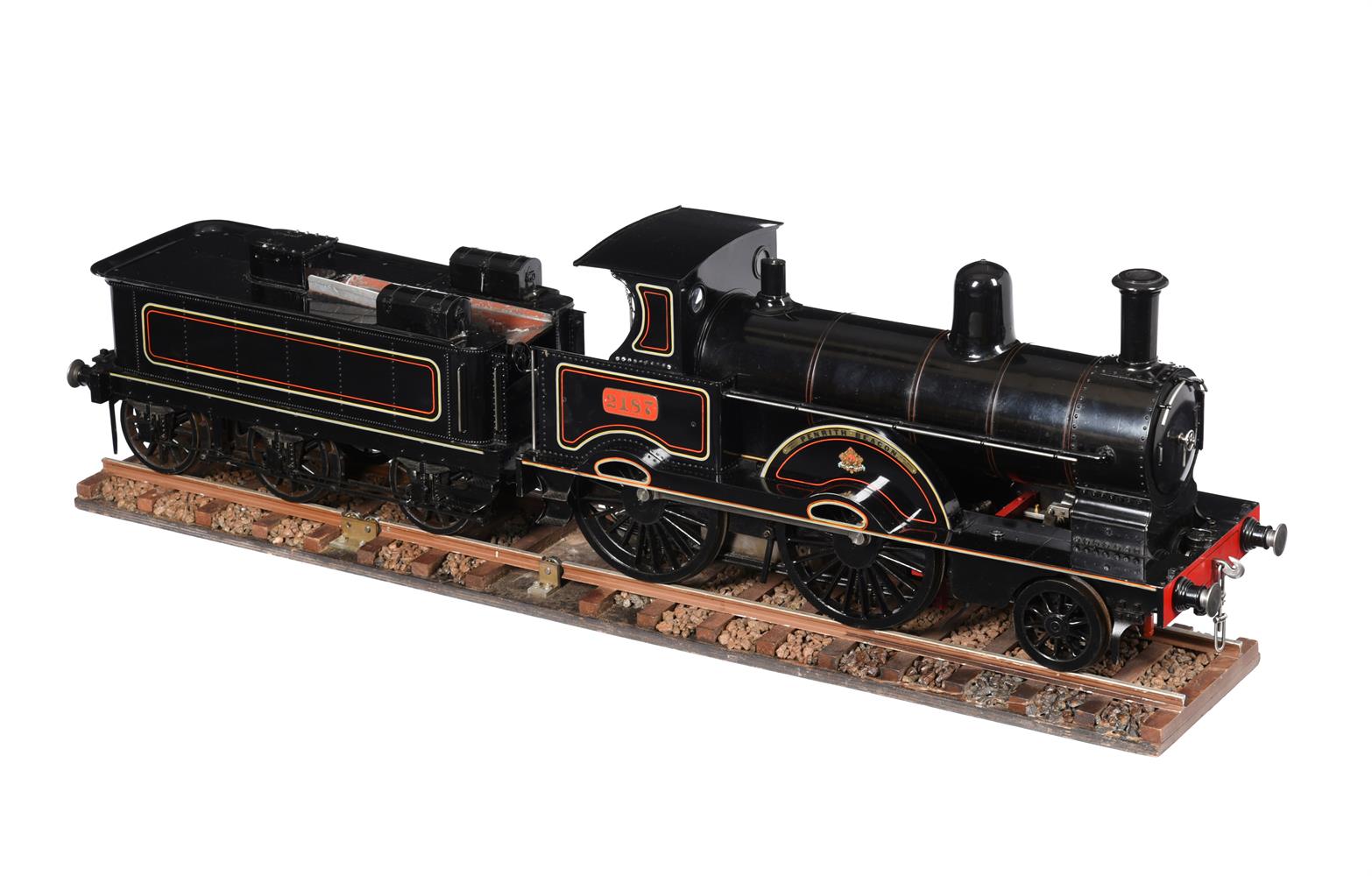

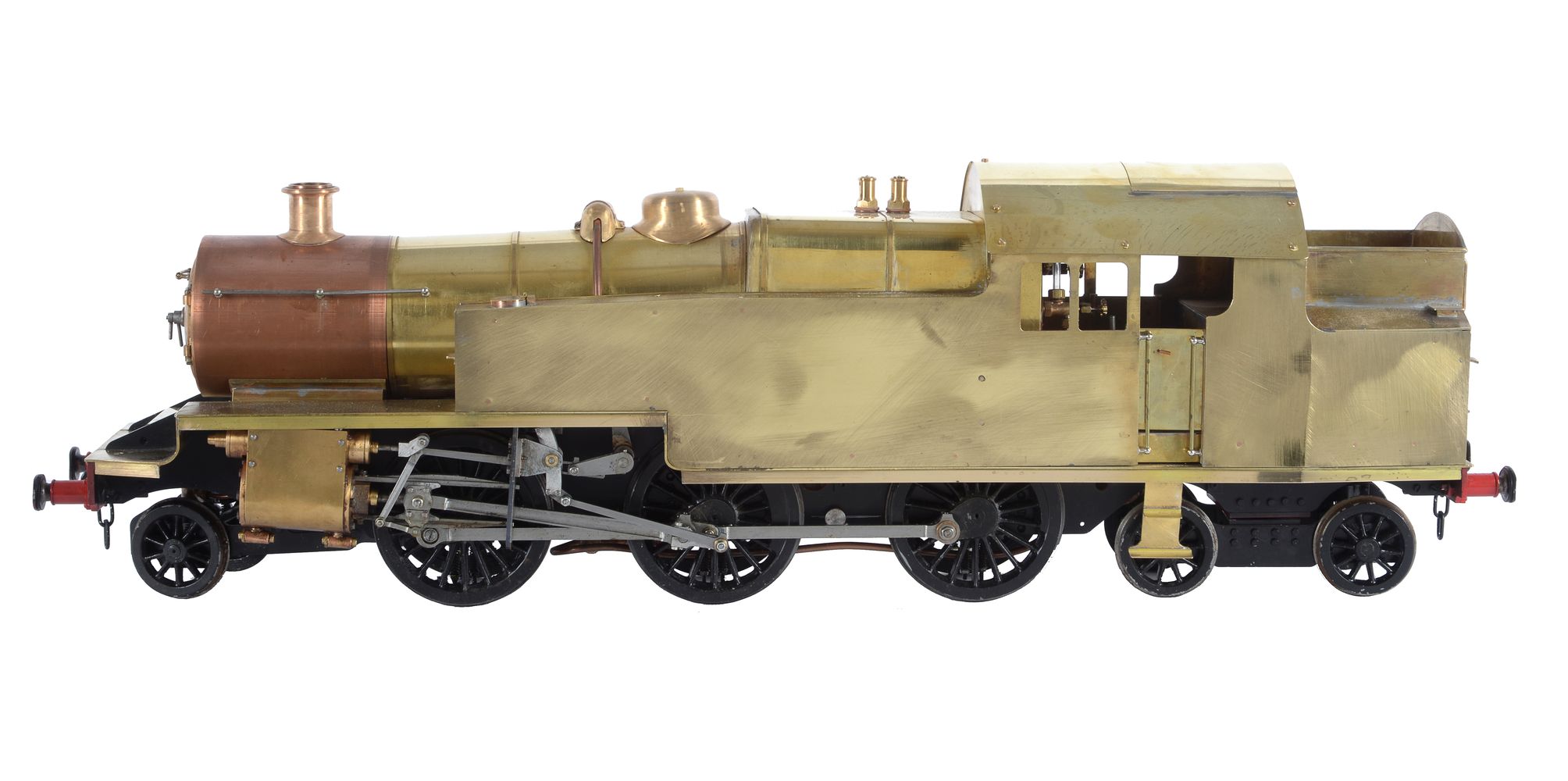

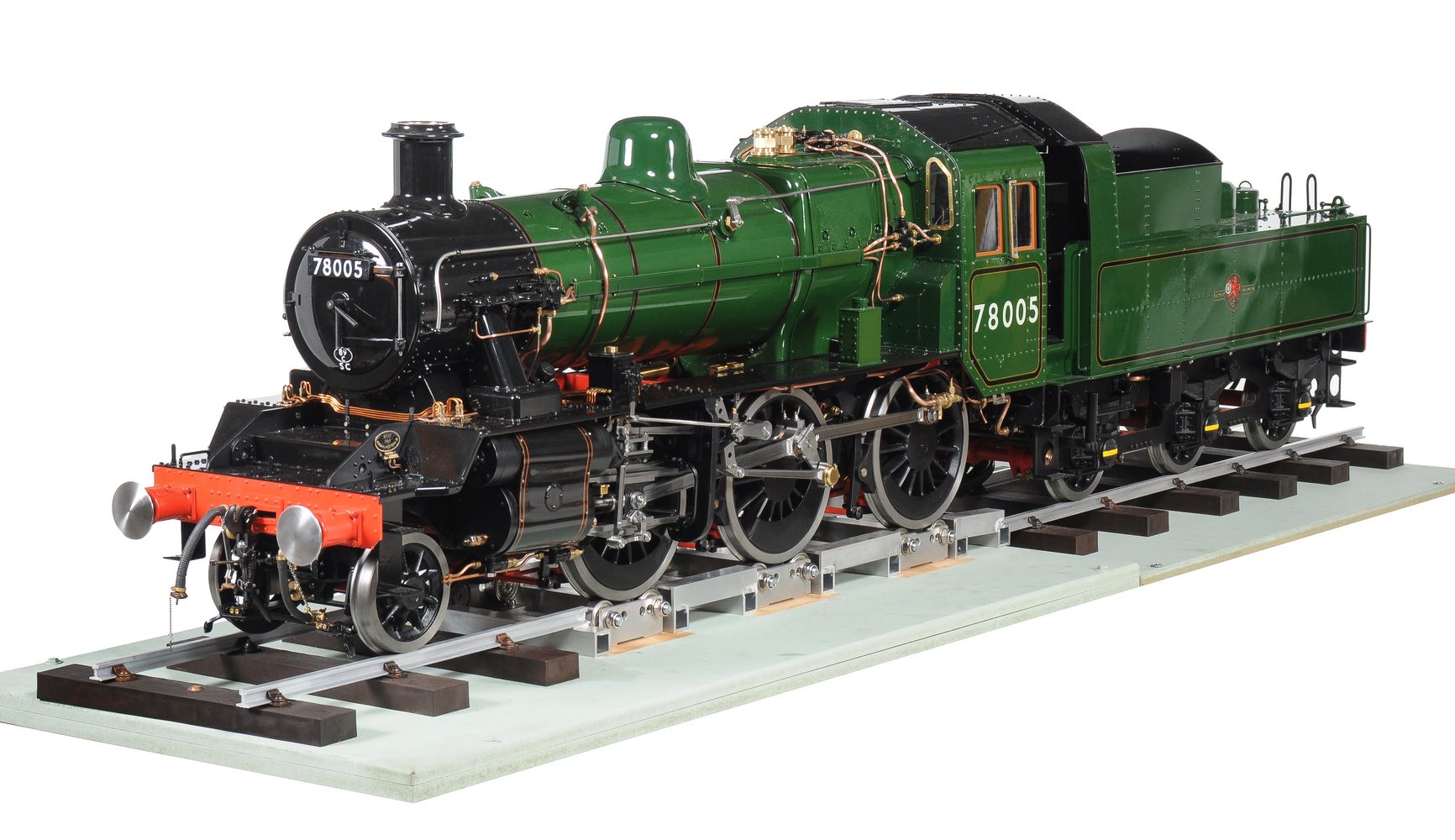
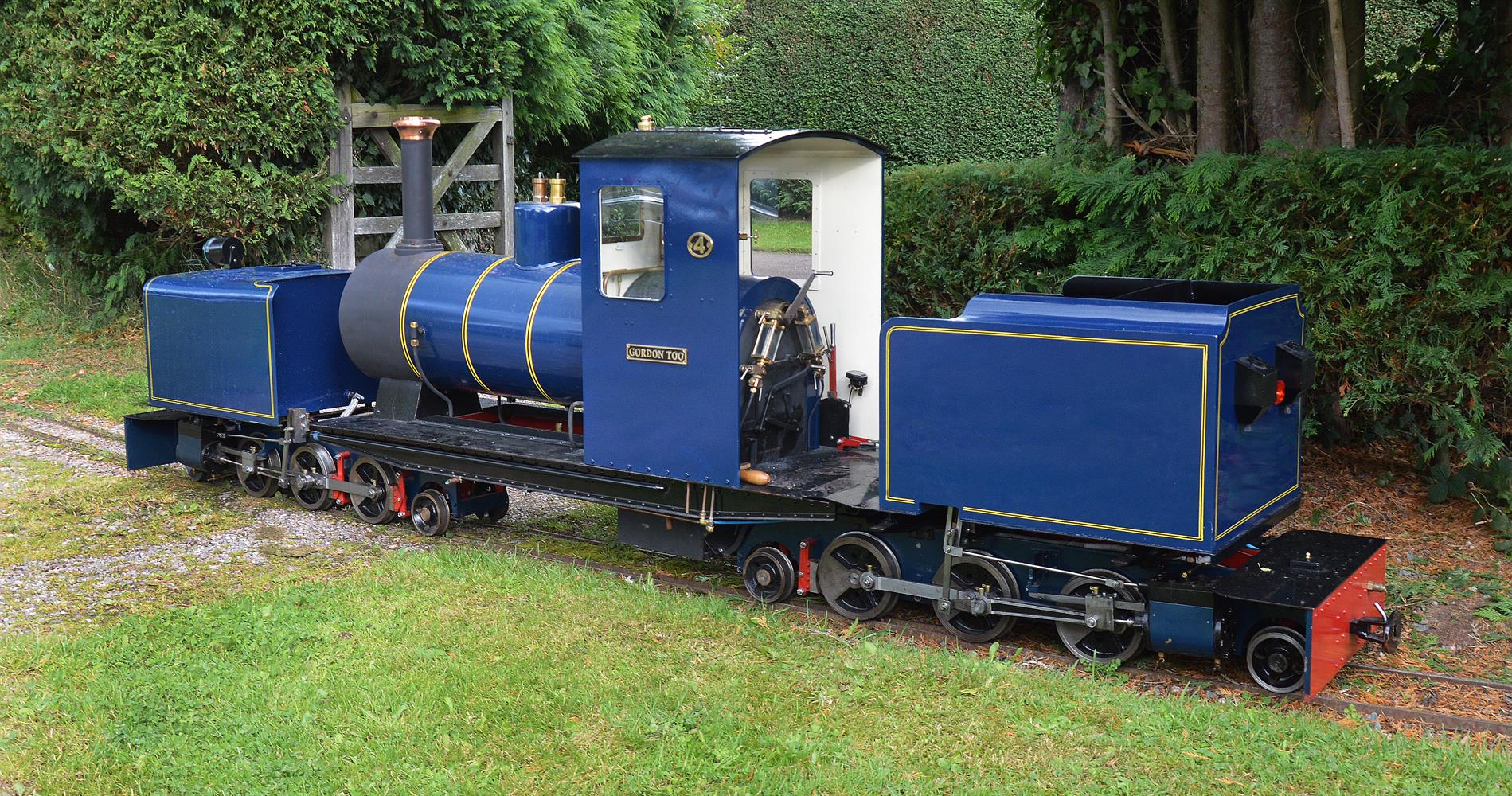
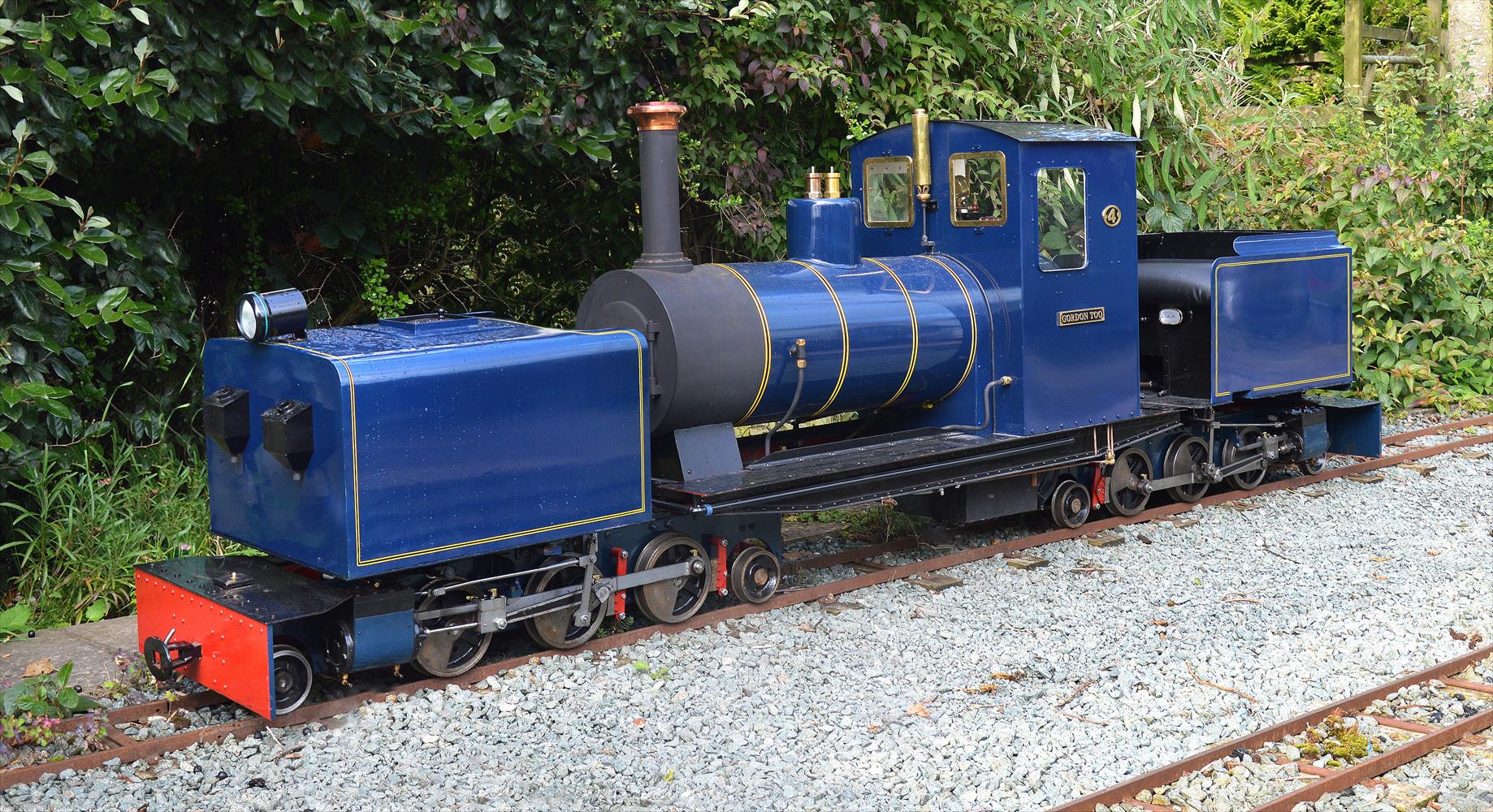
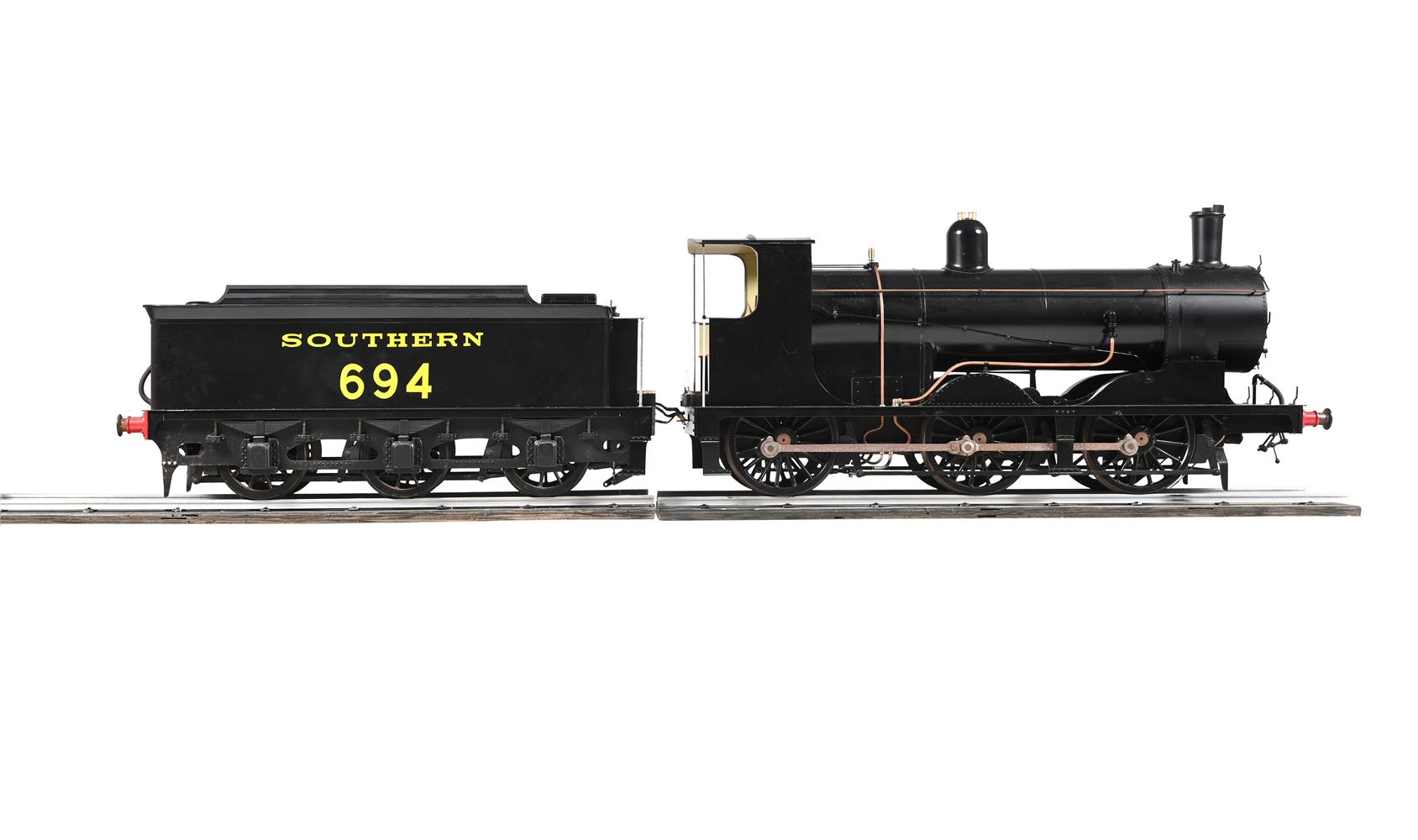
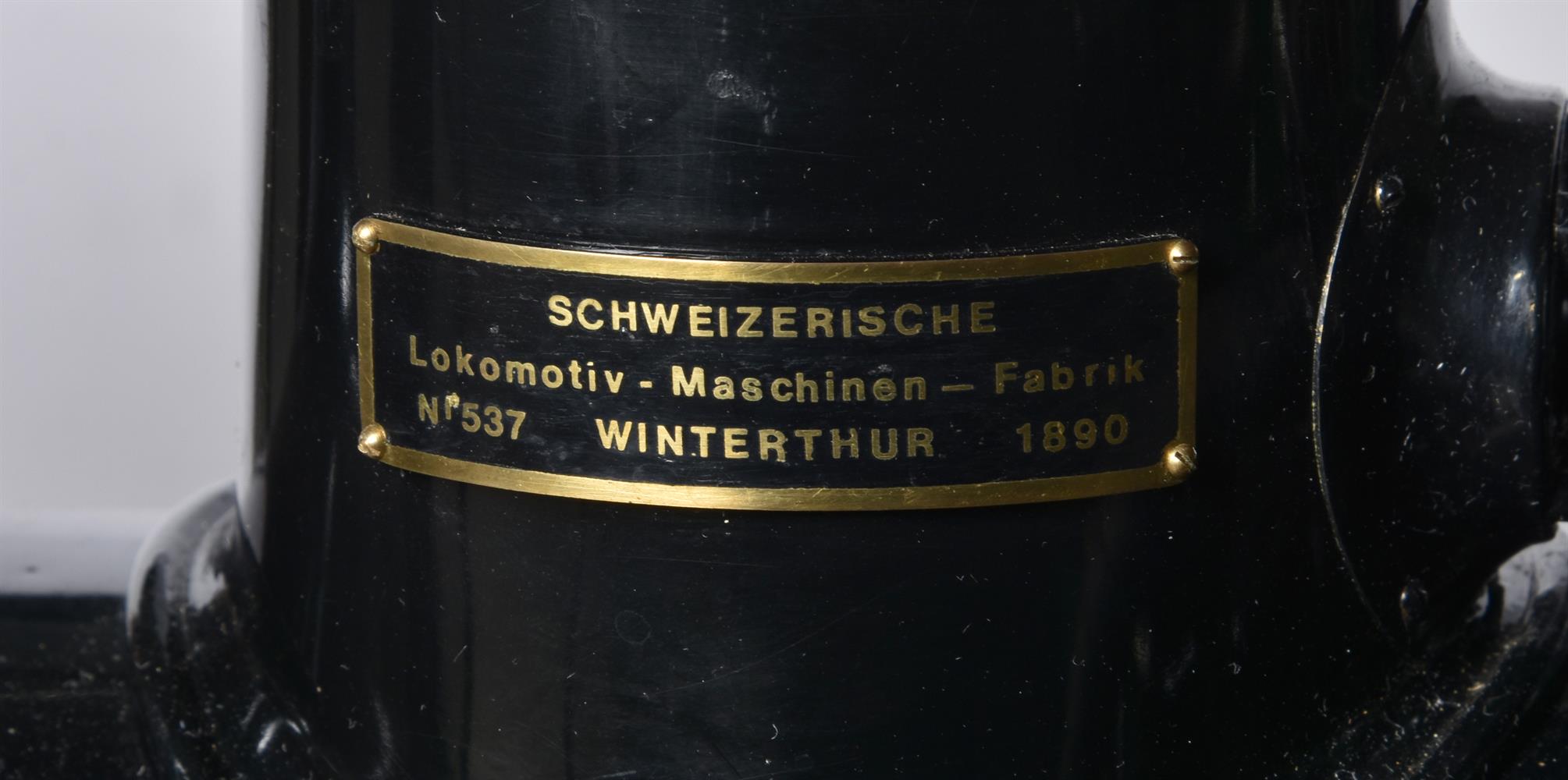
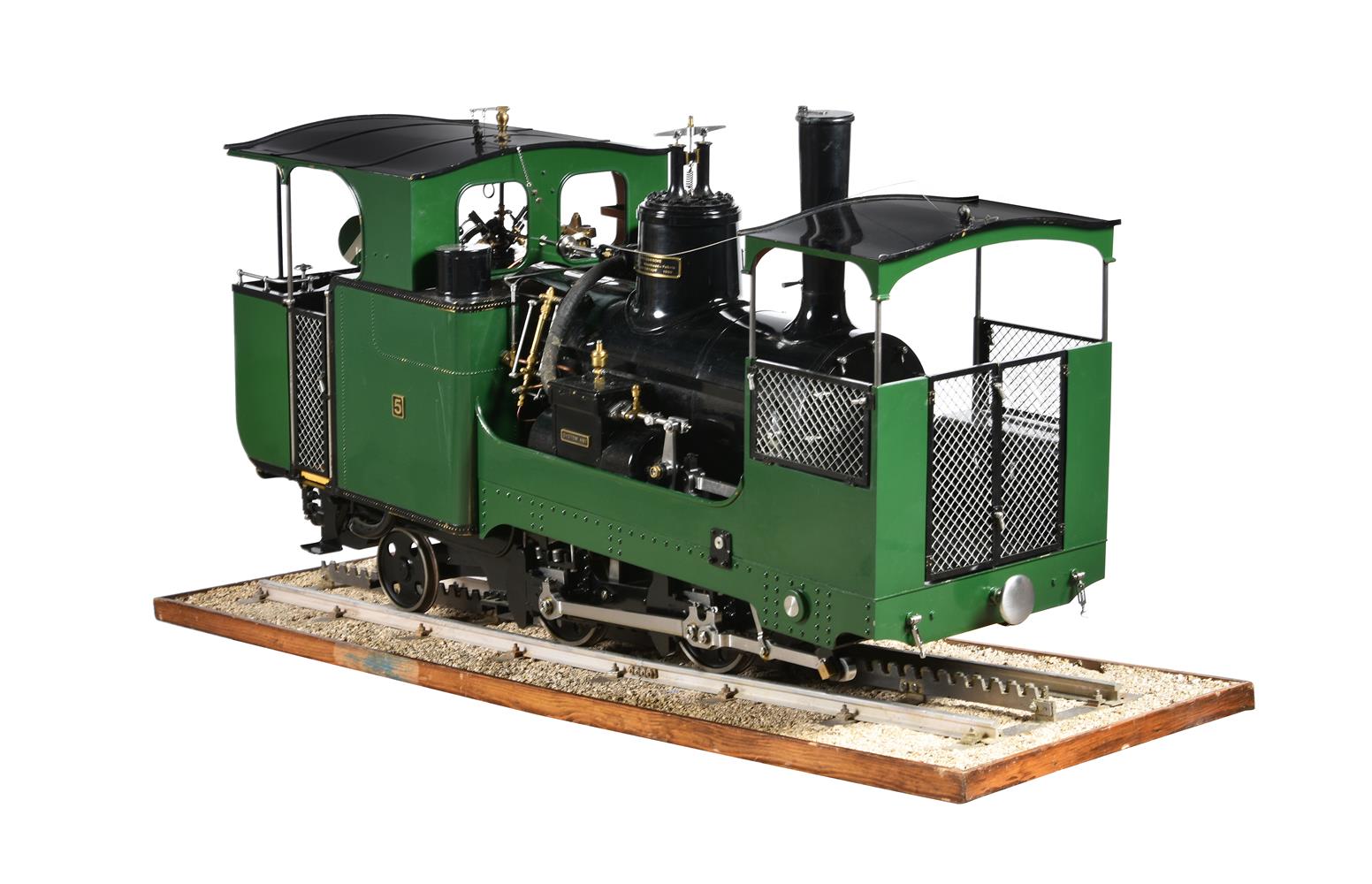




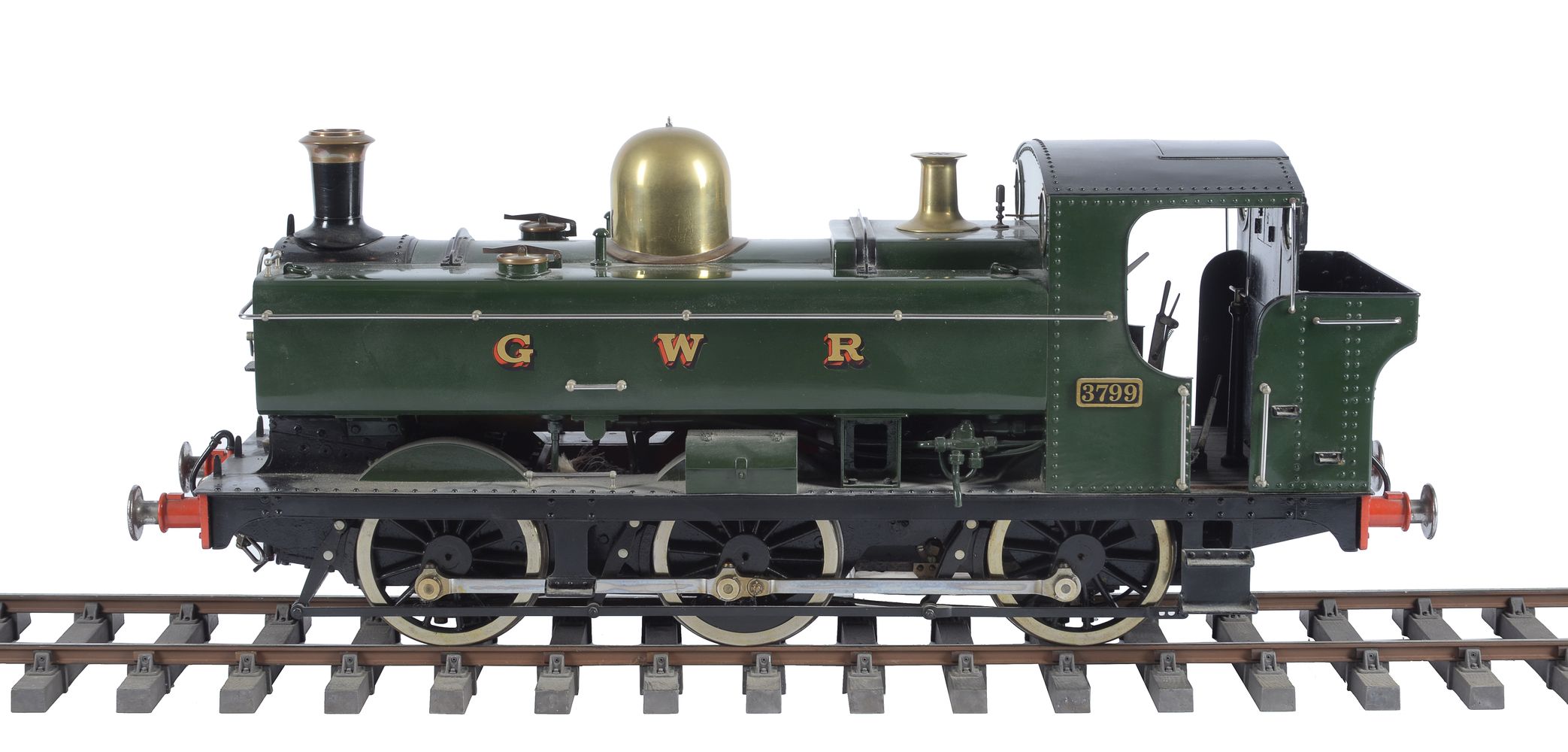
Testen Sie LotSearch und seine Premium-Features 7 Tage - ohne Kosten!
Lassen Sie sich automatisch über neue Objekte in kommenden Auktionen benachrichtigen.
Suchauftrag anlegen